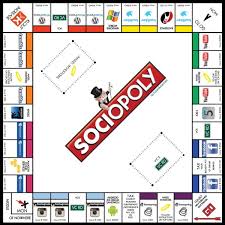During the action against the National Association of Broadcasters last September, a small group met to discuss a Communications Bill of Rights for the United States. Our aim was to start envisioning a democratic media that was accessible, inclusive, and accountable to everyone, and independent of both corporate and government control.
We also wanted to reinforce and help maintain our successes: the micro and community radio stations, the Indymedia centers, the independent Internet websites, and videos and films that propagate the voices and perspectives of the great majority of groups that are either left out of or maligned by the corporate media. These are the small, yet effective media that made possible the latest wave of anticorporate organizing in this country and around the world.
We recognize that media reform is only one part of a larger strategic vision for social justice. However, no matter what other social or political issue is critical to you, it is no longer possible to mobilize effectively anywhere in the world without confronting the problems of media access and representation. A handful of U.S. conglomerates–such as Disney-ABC, GE-NBC, Westinghouse-CBS, and AOL-TimeWarner–now dominate the media landscape around the world and play a crucial role in keeping global corporations connected and economically viable.
Independent journalists and media activists in every region of the world have recognized that fact, and have been proposing their own strategies for breaking the corporate media blockade and supporting locally controlled independent media of all kinds. Documents like the People’s Communications Charter (www.waag.org/pcc/) begin with the same idea: the people own the airwaves, a natural resource that has been misappropriated by corporate and state interests. Circulated by a growing alliance of international media researchers, independent radio and video producers, and human rights activists, the Charter calls for a radical redistribution of the control of the media system and the creation of a new system in which quality “information provision and communication services” are not left up to governments and markets. The World Association of Community Radio’s Declaration on Communication and Human Rights calls for the right of all people to “produce and contribute information” that respects cultural, linguistic, and gender diversity in all media (www.amarc.org).
In the United States, several media reform groups have drafted communications platforms. Of course, their real test is how useful they are in practice, and not only in media-centered campaigns. As Robert McChesney writes elsewhere in this issue, we need to make the media part of every campaign for social justice. So, media activists need to support and work with other social justice activists in campaigns for a comprehensive vision of social change.
I hope that you will respond to this first draft of demands below and contact us with your own ideas. The Bay Area Alternative Media Network and Media Alliance will then help develop a strategy and campaign for a Communications Bill of Rights that can work for other groups throughout the United States and around the world.
Monopoly ownership: The 1996 U.S. Telecommunications Act encouraged consolidation of the U.S. media industry. With few limits on corporate ownership, a handful of interlocked companies now own the vast majority of media content providers, distribution networks, and local outlets. This consolidation has especially restricted the opportunities for women, people of color, youth, and independent cultural workers. We demand a reassertion of the anti-trust regulations, so that no corporation is allowed to own more than one media outlet per community. Diversity of ownership is an important prerequisite for diversity of viewpoints.
Licensing of public airwaves. We demand that radio and TV licenses for public airwaves only be issued to companies that demonstrate how they will effectively serve the public interest in terms of: local programming, children’s programming, labor rights of working journalists, and a diversity of representation and perspective throughout the year, especially during elections. Licensees should agree to accept no paid political advertising.
Digital media: Corporate TV has already grabbed the digital TV spectrum for free. We need to reverse this and demand that it pay rent on the airwaves through public service obligations. We also need to fight for digital radio. In the 1940s, dissatisfied with commercial radio, the public and Congress demanded about 20% of the FM spectrum for noncommercial programming. We demand 50% of the digital radio and television spectrum for noncommercial programming.
Micro radio. We support the initiatives of micro radio pioneers who have so courageously shown us how ordinary citizens can produce their own local programming. We demand that the Federal Communications Commission and Congress legalize neighborhood or micro-powered radio.
Public radio and television. We support the initiatives of community radio activists at the Pacifica and other networks to keep their stations locally controlled and operated. We also support movements to reclaim “public” radio and TV stations by rolling back liberalized underwriting rules, which in effect allow commercials on public radio and television.
Diversity of content and creators. Consolidation has led to more of the same. The 200 channel universe includes almost no dissenting viewpoints, and the interests and perspectives of women, people of color, workers, queer people, and local communities are consistently underrepresented. Voluntary compliance has not worked at all. We need to support financial initiatives that encourage more ownership, staffing, and programming by the people who are in fact not minorities but the majority.
Dorothy Kidd is a member of the Bay Area Alternative Media Network and teaches Media Studies at the University of San Francisco.

